Although O’Neal has been around since the 1960s, and entered the mountain bike market in the late eighties, it's not yet established itself in the accessories and packs markets in the same way as CamelBak or EVOC.
So can the Roamer backpack make inroads and compete with better-known brands?
O’Neal Roamer backpack specifications
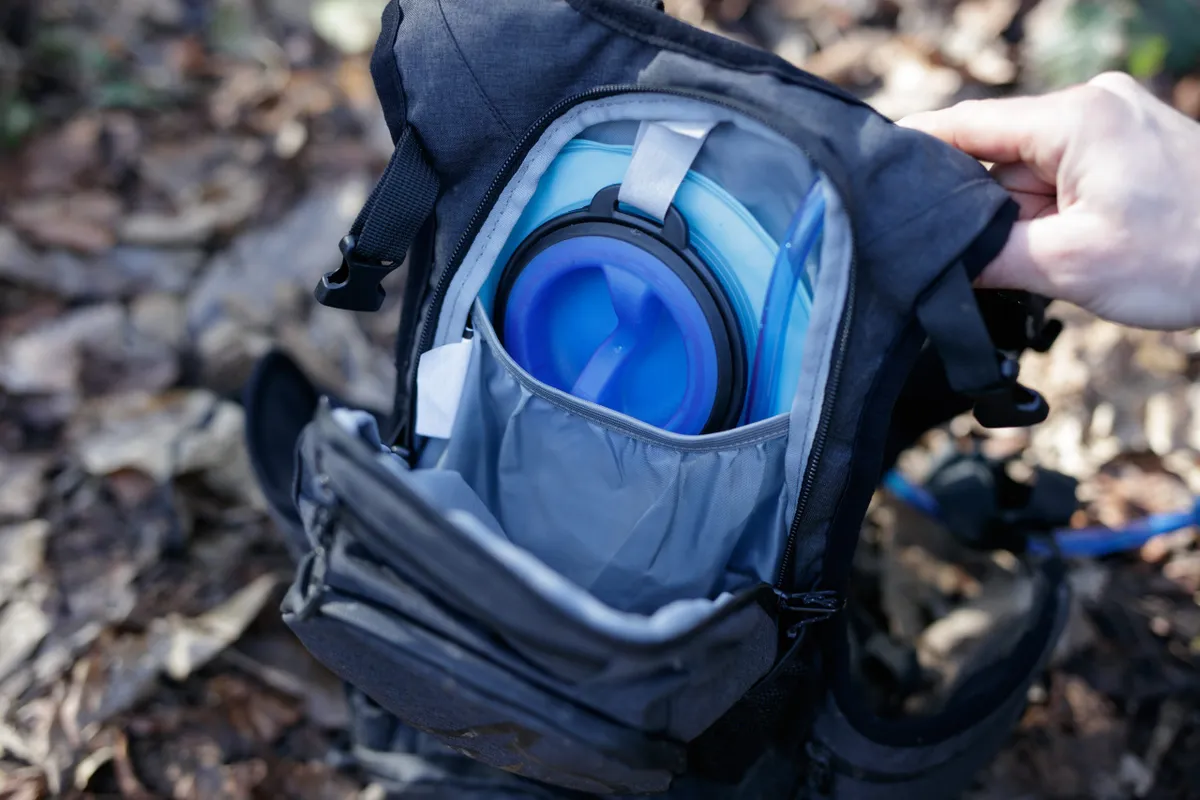
Boasting a 12-litre capacity, and a 2-litre bladder included with the bag, the Roamer has three main zipped pockets with two zipped hip compartments on the securing hip strap. There are two further zip pockets on the shoulder straps at chest height that are accessible from the front.
The front pocket has an internal organiser and a keyring clip. There’s a microfibre-lined stash pocket and a main compartment that has a separate area for the bladder. On either side of the bag are two elasticated pouches.
An elasticated helmet carrier – that’s stowed in a separate pocket at the base of the bag – attaches to two clips just beneath the top of the shoulder straps.
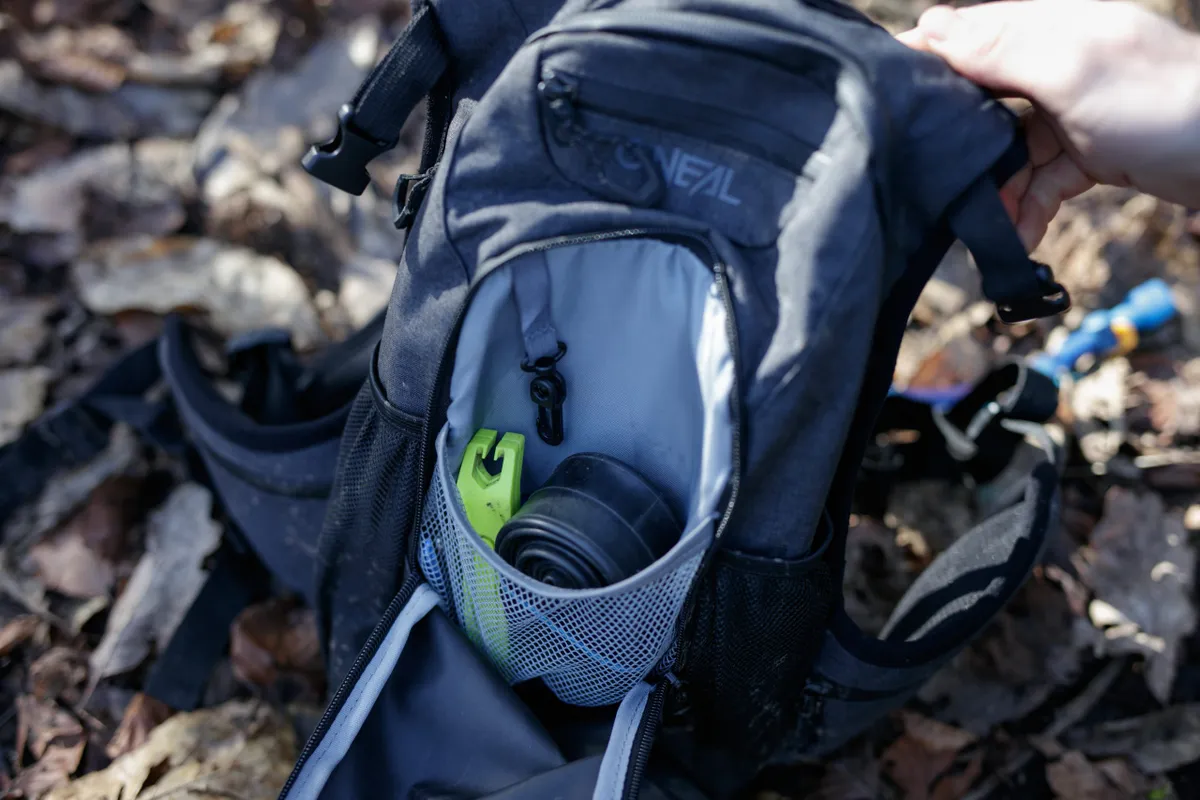
There are chest and hip securing straps and a removable, raised and padded back panel that O’Neal claims aids comfort and improves airflow.
All zips provide an element of protection from water and the pack’s made from polyester.
O’Neal Roamer backpack performance
Despite the 12-litre claimed capacity, the Roamer struggled to accommodate the bare minimum I’d take on a day’s worth of riding. Once the 2-litre bladder is full and in place, and a few essentials are packed in such as a tube, a pump and multi-tool, there isn’t a whole lot of space for much else.
The bag’s 790g unladen weight is high for its size.
Not only is the bag fairly small, but the material it’s made from isn’t very pliable and doesn’t deform and stretch, limiting how much can be squeezed into its pockets.
Having only one internal organiser was a bit frustrating, especially after being spoilt by packs with more pockets. The smaller, microfibre-lined pocket was just about big enough to fit a modern-sized phone, but it was tight.
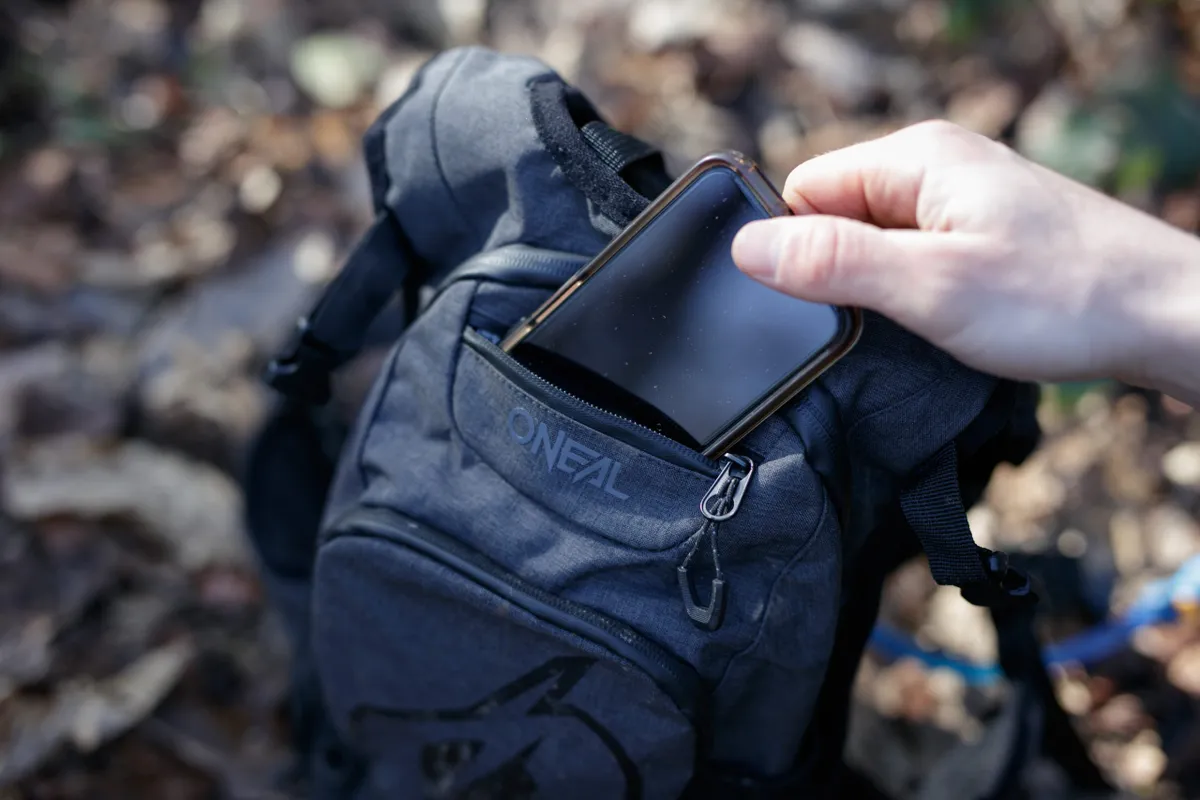
As a recurring theme, the hip and chest pockets aren’t big enough to store bulkier items and they don’t stretch at all.
I was left puzzled, trying to work out what the chest pockets were designed for; store something pointy or sharp, such as a tool, and in a crash, the chances of injury could increase. They are just about big enough for cereal bars, though.
The hip pockets are a long way around to the back and were tricky to access when wearing the bag. This meant getting to whatever was stored in them was tricky on the move.
The custom bladder leaked during the testing period. I thought I’d incorrectly attached the straw, but after several careful attempts to fasten it, it still leaked, soaking the bag.
After requesting a second sample from O'Neal, it looked like the original bag had been missing the small rubber O-ring that creates a seal between the hose and the bladder. The replacement bladder had the O-ring in place and didn't leak.
However, it’s impossible to remove the straw from the bladder when it's full. The straw screws into the bladder but, unlike CamelBak’s system, it doesn’t have a valve to stop water spilling out. Although this isn’t a total nuisance, it’s important to remember to fill the bladder when it’s attached and correctly fitted to the bag.
I found the bag sat quite high on my back and, although the padded shoulder straps were comfortable, the back section was hot and uncomfortable to wear for prolonged periods.
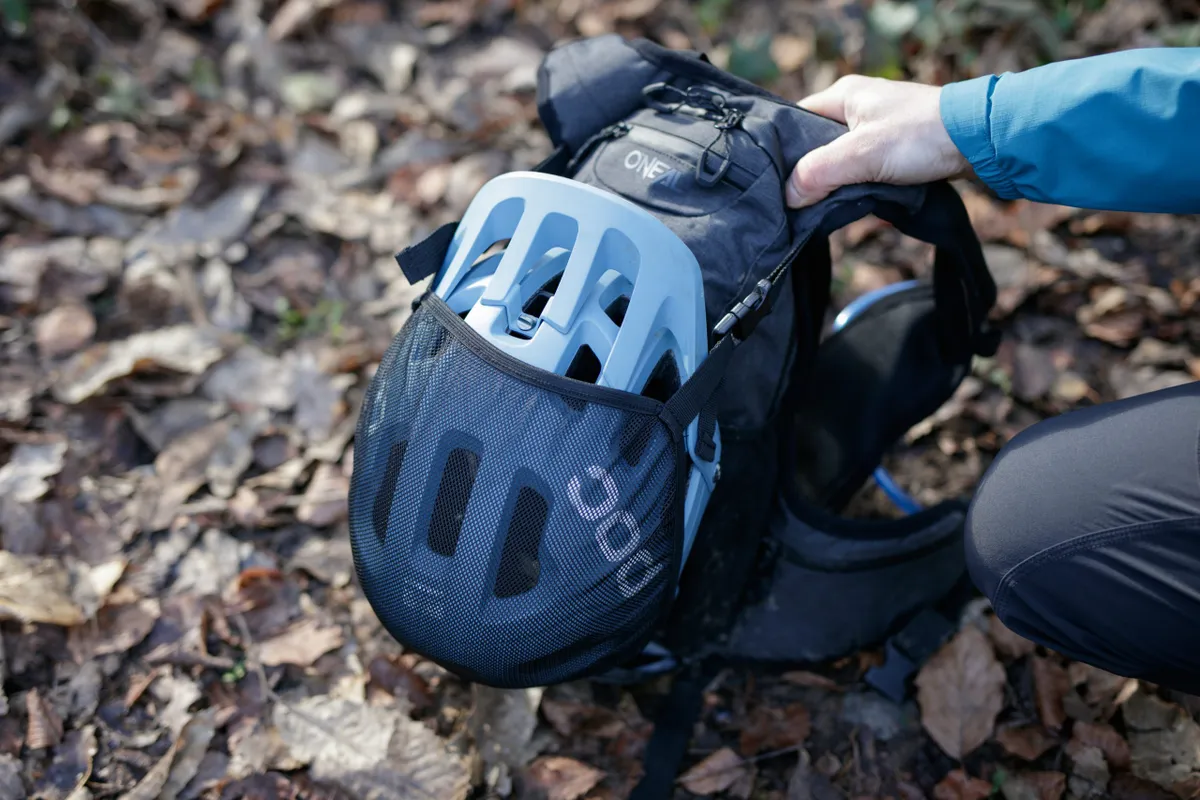
To reduce the amount the bag moved around on my back, the hip straps needed to be fairly tight. With the bag sitting high, the hip strap is closer to the diaphragm/stomach area, and the tightness required to stop it from jumping on the descents meant that breathing was restricted a little when climbing. To overcome this, I needed to constantly readjustment the hip straps.
The generously sized elasticated helmet pouch is big enough for open-face helmets, but when a lid is being carried it’s not possible to close the helmet carrier pocket. This means the pocket gets full of mud, grit and water.
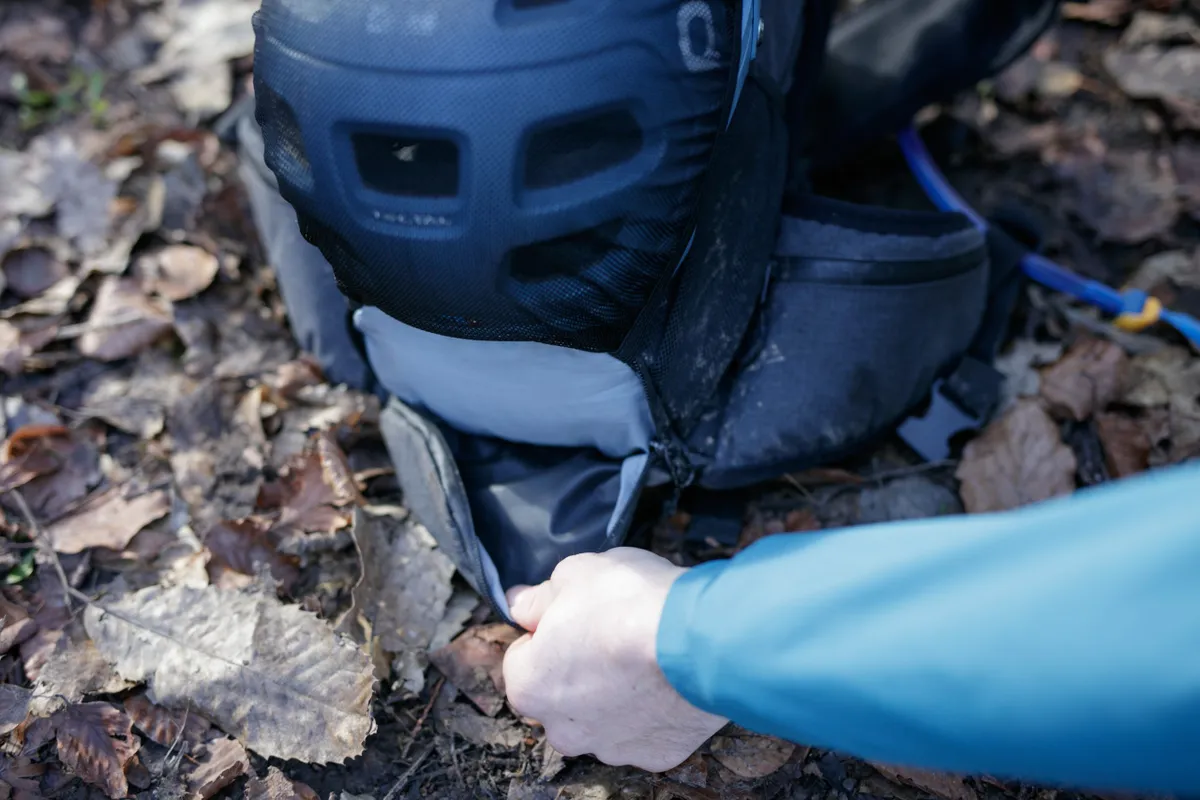
When a helmet is mounted to the pack it limits access to the front pockets. Full-face helmets I tested with did fit, but could be a squeeze, and depending on how full the bag was sometimes caused it to deform and push into my back. Attached helmets were secure and didn't bounce out over rough terrain.
Because the pocket’s quite large, chin bars from convertible helmets fit in there comfortably.
O’Neal Roamer backpack bottom line
The Roamer has some significant faults. Despite its claimed size, there’s a lack of space. It has got a really tough and rigid construction too that stops the bag deforming around stowed objects and its high-riding nature can restrict breathing. This all makes for a less than ideal package.
The shoulder straps are comfortable, however, but this isn’t enough to redeem it.
Product
| Brand | Oneal |
| Price | €79.99 |
| Weight | 990g |
| br_whatWeTested | O’Neal Roamer |
Features
| Bag capacity | 12.0000 |
| Bag capacity | LITER |
| Bladder capacity | 2.0000 |
| Bladder capacity | LITER |
